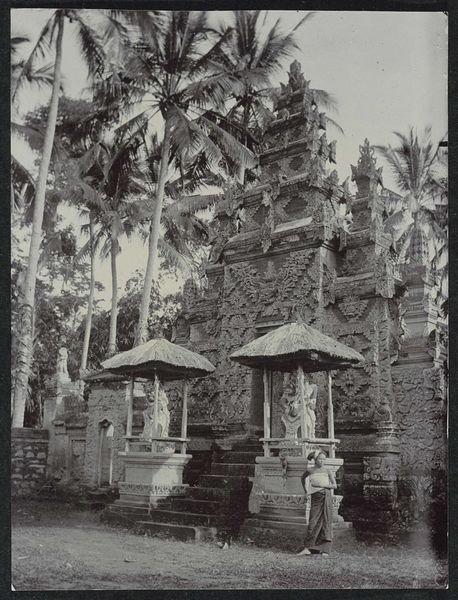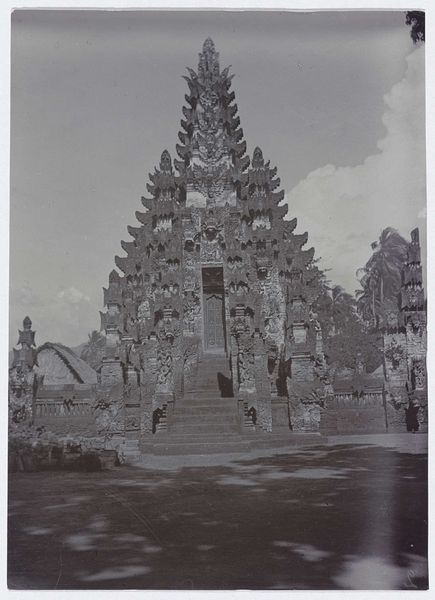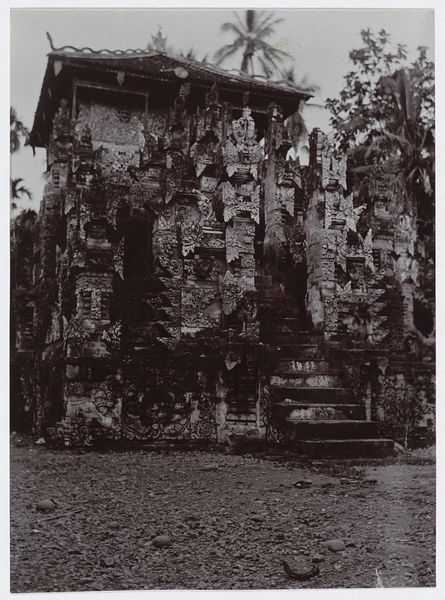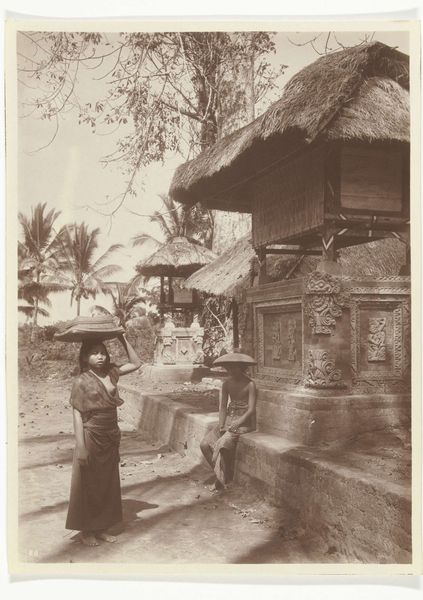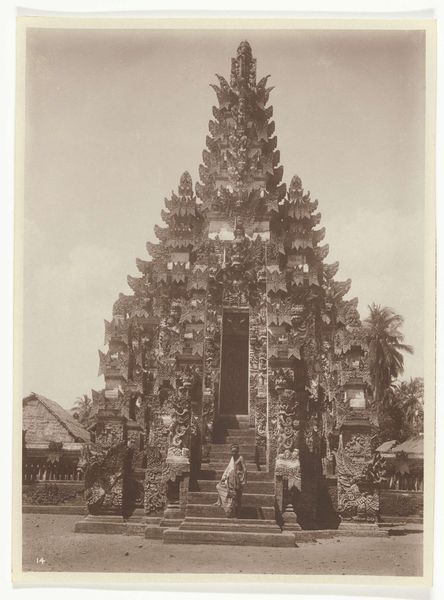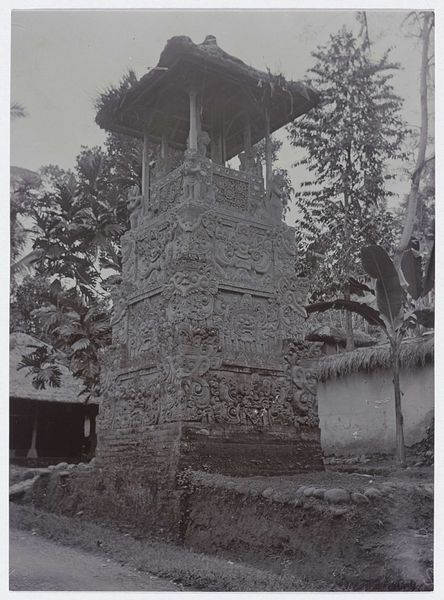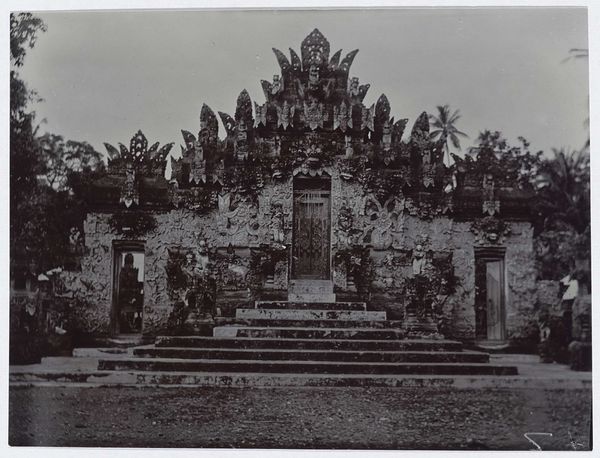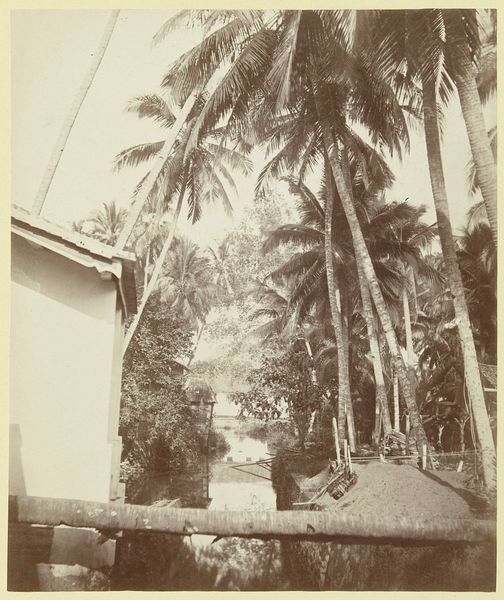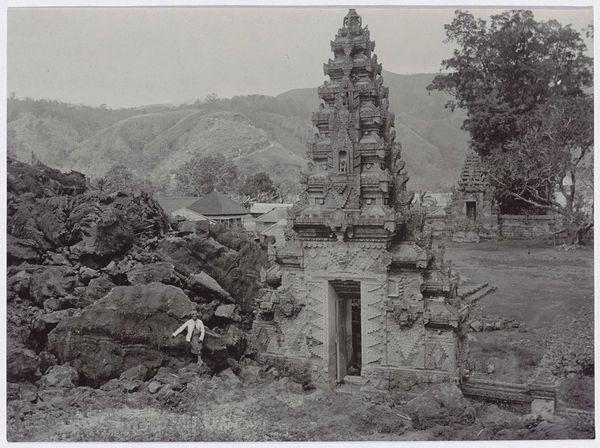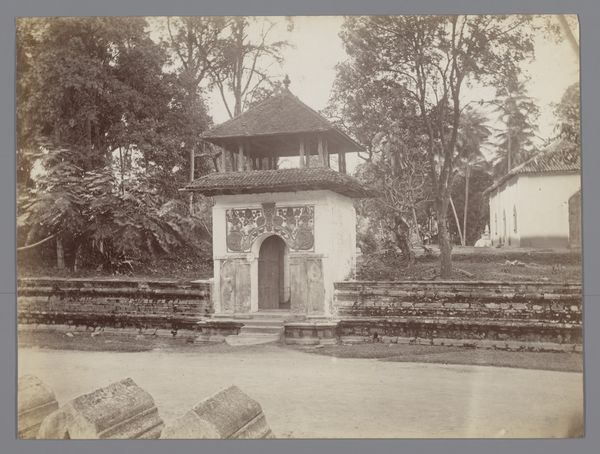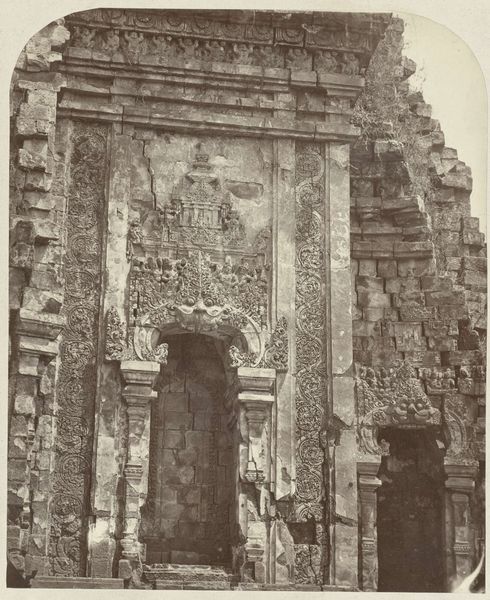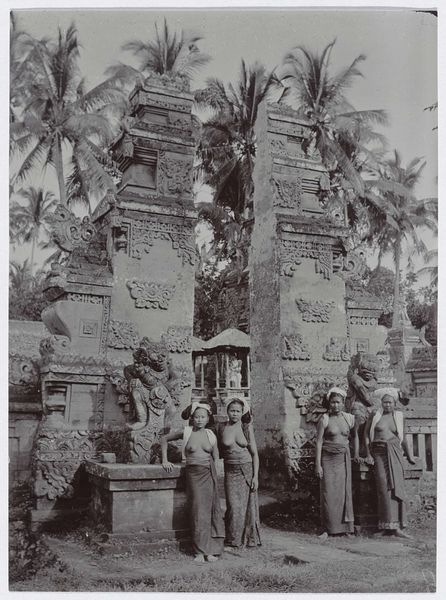
Een gedecoreerde poort met daarvoor een kleine tempel c. 1900 - 1915
0:00
0:00
photography, collotype, architecture
#
asian-art
#
landscape
#
photography
#
collotype
#
architecture
Dimensions: height 164 mm, width 116 mm
Copyright: Rijks Museum: Open Domain
Editor: This photograph, “Een gedecoreerde poort met daarvoor een kleine tempel,” by Johanna Hermina Marmelstein, dates to between 1900 and 1915 and appears to be a collotype print. The sepia tone and detailed architecture create a serene, almost dreamlike, quality. How do you interpret this work within the context of its time? Curator: I see it as a document deeply entrenched in the visual language of Orientalism. The photograph, while seemingly capturing an objective reality of Balinese architecture, actively participates in constructing a Western gaze onto the "exotic" East. We must ask, who was this image created for, and what narratives did it serve? Editor: So, you're suggesting the photograph might reflect more about the photographer's perspective than actual Balinese culture? Curator: Precisely. The composition, the very act of isolating this temple and presenting it as a spectacle, speaks volumes. Consider the power dynamics at play. This was a period of intense colonial activity. How did images like this legitimize and perpetuate colonial ideologies by othering and exoticizing the East? It invites critical dialogue between art history and postcolonial theory. Does the framing perpetuate or challenge existing stereotypes? Editor: I never considered that. I was just looking at the details of the architecture. But what you are saying makes me question what is being emphasized, and for whom? Curator: Exactly. Now think about the absence of Balinese voices in its creation and dissemination. Understanding whose gaze informs this image and for what purposes allows us to engage with it critically, beyond simply appreciating its aesthetic qualities. Editor: It's fascinating how a seemingly straightforward photograph can reveal so much about historical power structures. Thank you, this really opened my eyes! Curator: And thank you. Questioning the narratives behind artworks helps us understand not only the past but also our present.
Comments
No comments
Be the first to comment and join the conversation on the ultimate creative platform.
